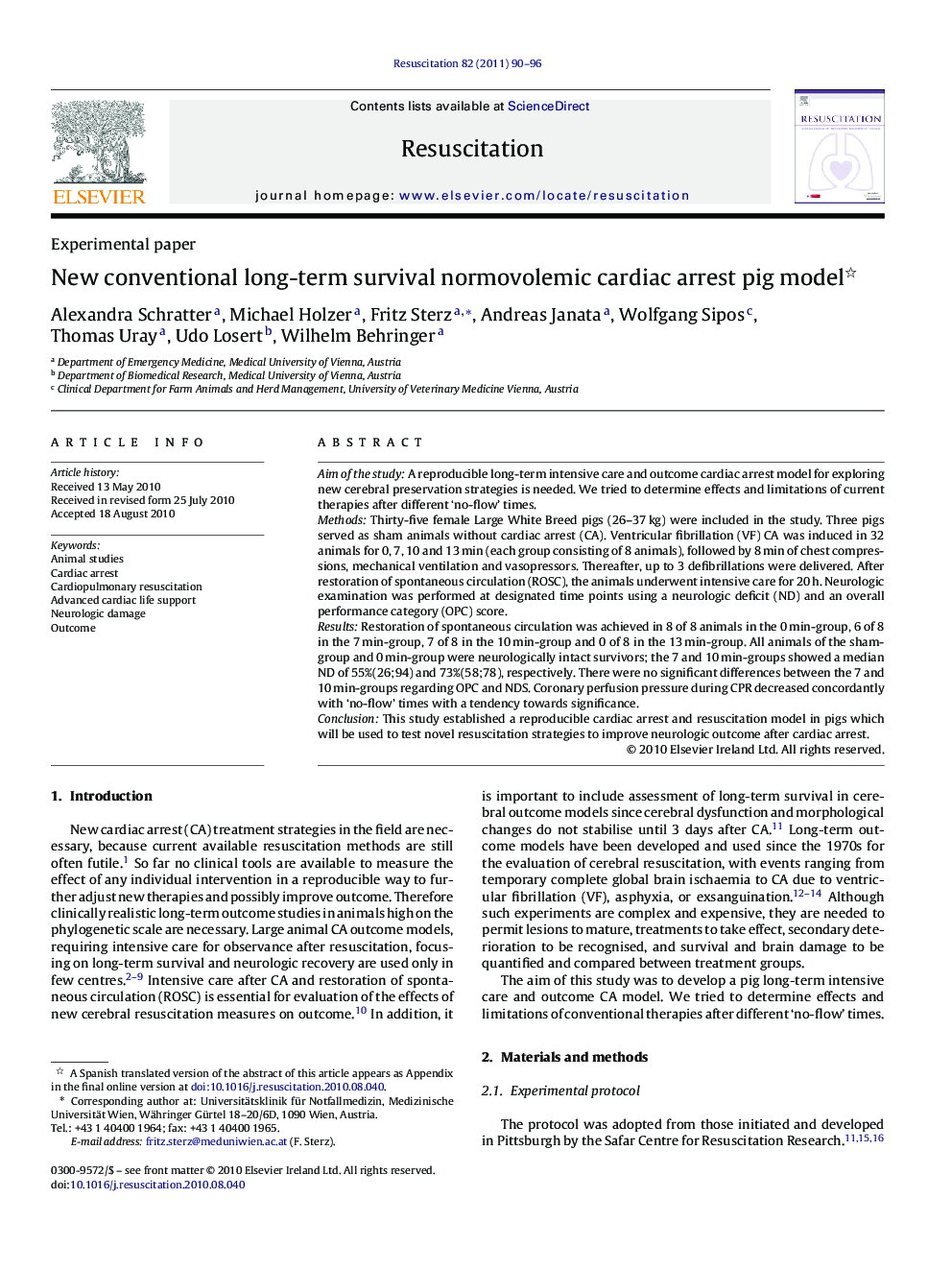| Article ID | Journal | Published Year | Pages | File Type |
|---|---|---|---|---|
| 5999194 | Resuscitation | 2011 | 7 Pages |
Aim of the studyA reproducible long-term intensive care and outcome cardiac arrest model for exploring new cerebral preservation strategies is needed. We tried to determine effects and limitations of current therapies after different 'no-flow' times.MethodsThirty-five female Large White Breed pigs (26-37Â kg) were included in the study. Three pigs served as sham animals without cardiac arrest (CA). Ventricular fibrillation (VF) CA was induced in 32 animals for 0, 7, 10 and 13Â min (each group consisting of 8 animals), followed by 8Â min of chest compressions, mechanical ventilation and vasopressors. Thereafter, up to 3 defibrillations were delivered. After restoration of spontaneous circulation (ROSC), the animals underwent intensive care for 20Â h. Neurologic examination was performed at designated time points using a neurologic deficit (ND) and an overall performance category (OPC) score.ResultsRestoration of spontaneous circulation was achieved in 8 of 8 animals in the 0Â min-group, 6 of 8 in the 7Â min-group, 7 of 8 in the 10Â min-group and 0 of 8 in the 13Â min-group. All animals of the sham-group and 0Â min-group were neurologically intact survivors; the 7 and 10Â min-groups showed a median ND of 55%(26;94) and 73%(58;78), respectively. There were no significant differences between the 7 and 10Â min-groups regarding OPC and NDS. Coronary perfusion pressure during CPR decreased concordantly with 'no-flow' times with a tendency towards significance.ConclusionThis study established a reproducible cardiac arrest and resuscitation model in pigs which will be used to test novel resuscitation strategies to improve neurologic outcome after cardiac arrest.
